Animal Tracks: Reading Stories on the Landscape
ANIMAL TRACKS
The blood in the snow is what gave it away. As we followed the evidence on the ground, it was clear that the mountain lion had come upon the elk in the thick lodgepole pine trees beside the road to Tower Fall. The lion grabbed onto the rear of the elk, holding on with sharp claws as the elk struggled and ran. A mighty battle for survival ensued. Ultimately the elk escaped, at least for the time being, limping up the hill across the road in one direction, the cat in the other.
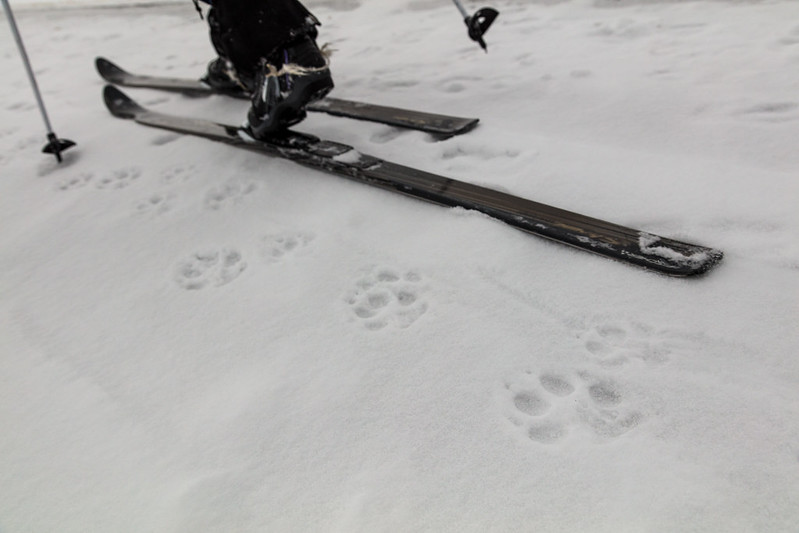
Skiing along wolf tracks
Yellowstone naturalist George Bumann and I witnessed this incredible encounter through a magical time machine that most visitors to Yellowstone overlook: animal tracking. Numerous skiers before us had swooshed right over the signs of this drama.
There are Always Animal Tracks in the Park, Don’t Forget to Look Down!
Most people scan the landscape for signs of the iconic wildlife who live here, never realizing that fascinating stories about Yellowstone’s animals are often visible right beneath their feet. It’s not uncommon to walk past the most extraordinary stories of predator and prey, life and death, and magical encounters.
Animal tracking is the equivalent of getting to see the world through the nose of the bloodhound. You get to travel back in time and unravel the layers of who has been on the landscape. By tuning in to the signs animals leave behind in the form of footprints, scratch marks, scat, and other sign, you can tell who has been walking along the river bank, who’s been sharing the trail with you (was it a coyote, or wolf?), or where the elk always cross the road. You can tell what a bear or wolf has been eating by the evidence left behind in their scat—was the bear eating berries, or an elk calf? Or was it catching fish? Animal tracks and scat make the invisible, visible.
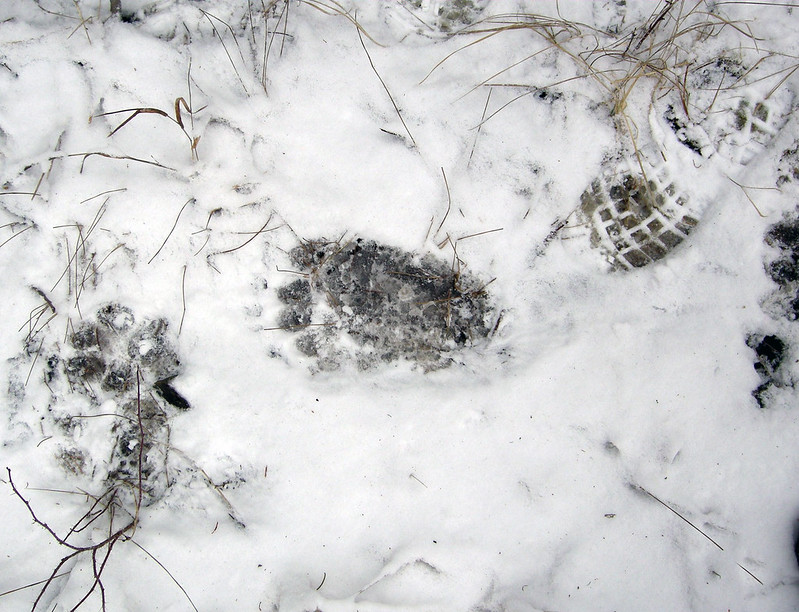
Wolf, bear and human tracks
Yellowstone CSI
Like a kind of Yellowstone CSI, Animal tracking is part science and part detective work: the animals leave pieces of evidence that prompt questions about the whole picture. Who traveled here? When? Were they alone? Where did they go? What were they doing? From these questions, you can form a hypothesis about what an animal is up to and sometimes follow the evidence to find answers. If you’re lucky, you may even see the animal itself.
In the case of the elk and mountain lion, the blood in the snow prompted us to look around for other signs, helping us discover both the elk and lion tracks. Reading the story, they let us ‘see’ the drama unfold—something we otherwise would have skied right past.
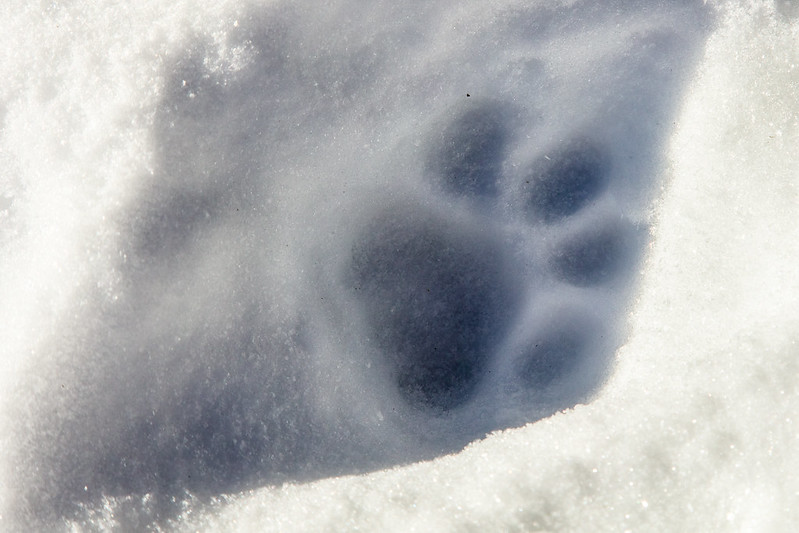
Mountain lion track
Animal tracking is recognized among indigenous peoples as being one of the most important skills for children to learn. It provides the ability to feed oneself, find danger before it finds you, and have a finger on the pulse of one’s local environment. In Yellowstone, it’s a wonderful way to deepen your understanding of the park and its wild inhabitants.
On a ramble through the sagebrush near Slough Creek this past fall, we encountered a set of grizzly bear tracks following a veritable wolf highway. From the imprints in the snow we could tell that at least 17 wolves had traveled through that morning, followed by what we assumed was a male bear. Bears often follow wolf packs in the fall just before hibernation to steal their kill and score a few extra calories. We didn’t see the actual encounter, but knew what had happened. What seemed like a stretch of empty sagebrush all of a sudden felt very, very alive.
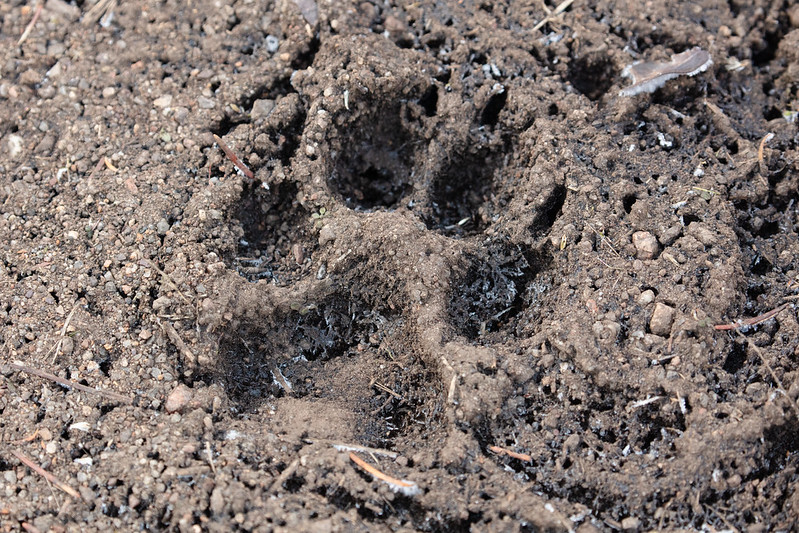
Frozen muddy wolf track
Tips for Animal Tracking
Anyone can begin to pay attention to the subtle signs beneath their feet. In Yellowstone (as well as in most places), animals and people often follow the same trails. While wildlife tend to avoid people, trails are a great place to see evidence that animals are in the area. Look for animal ‘track traps;’ sections of dust, mud, or snow where footprints easily make an imprint —and slow down to examine what you see. The findings may surprise you!
With seven native ungulate species, some of the most common animal tracks you’ll see are bison, elk, and deer, with the occasional pronghorn, bighorn sheep, and moose. But some of the most exciting are the predators, because they are more difficult to observe.
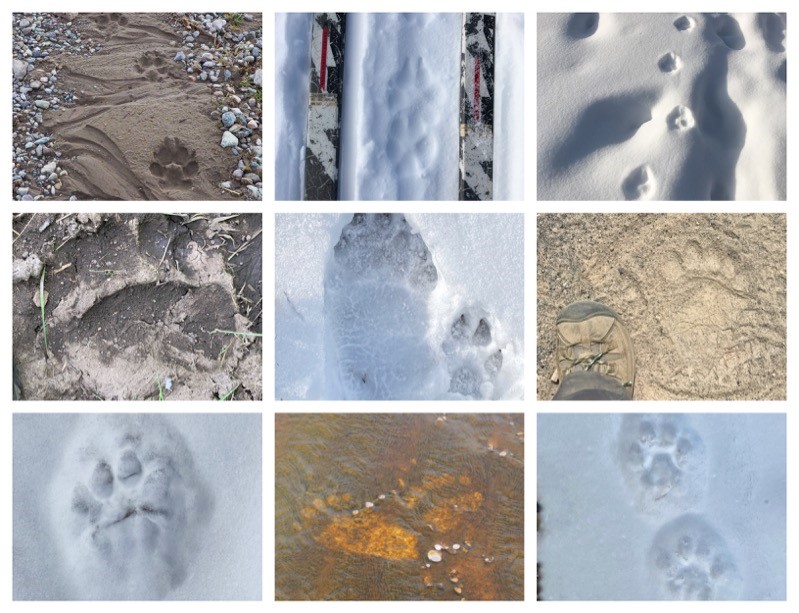
Top left to right: wolf tracks in mud, wolf tracks in snow, coyote tracks
Middle left to right: grizzly track in mud, grizzly and wolf track in snow, black bear track in soft dirt
Bottom left to right: mountain lion track in snow, grizzly tracks in thermal feature, mountain lion tracks in snow
Is it a wolf, or a coyote? Wolf tracks are large, about the size of an adult hand, whereas a coyote track will be about the length of a finger.
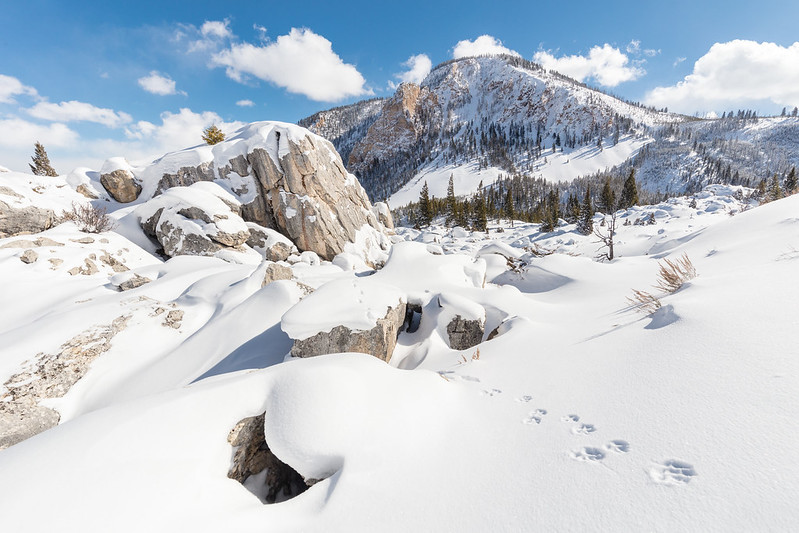
Coyote tracks in the Hoodoos
Is it a black bear or grizzly bear? In summer, the big prize on the trail is bear prints. While hiking, we personally much prefer to see evidence of bears rather than the actual bear! Both tracks can be about as big as an adult foot; grizzlies tend to be a bit larger and are more blocky, with the toes forming a relatively straight line across the pad. Black bear tracks are more rounded, with the toes arcing downward across the outside edges.
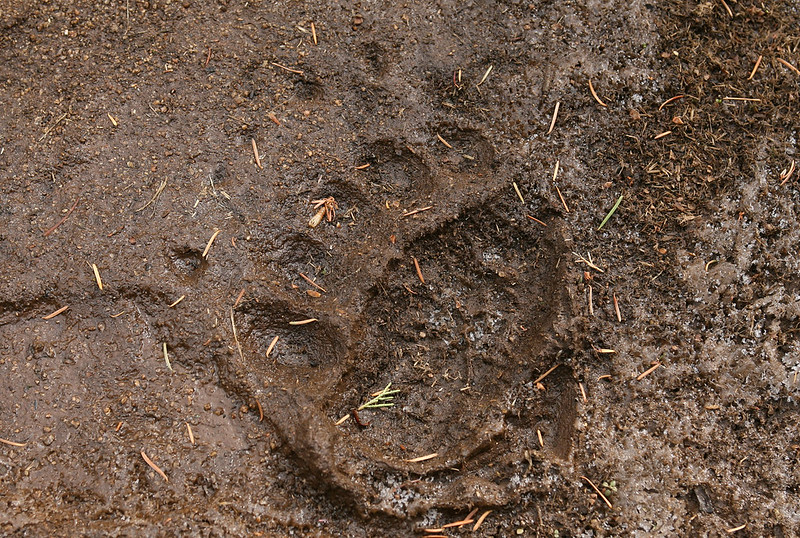
Grizzly Track
In winter, a common scene is snowshoe hare and pine marten tracks. While you’ll rarely see either animal, the eternal dance between predator and prey is regularly seen in the snow, particularly in forested areas like Indian Creek.
Another fun sign in the snow are wing prints; this tells you an owl captured a rodent.
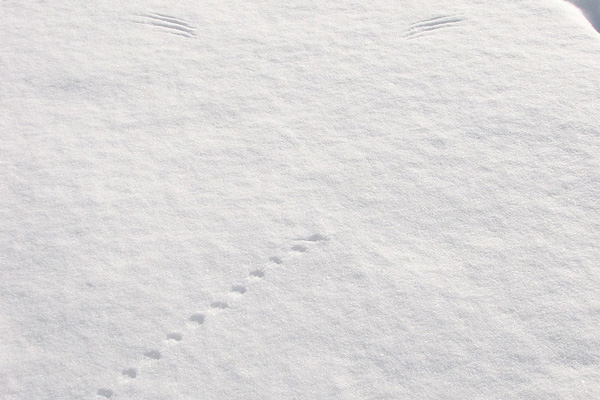
Mouse tracks and bird wing imprints
An Animal Tracking Exercise
Try this next time you’re out: if you find an animal track, follow it a ways. Some animal tracks will be more clear than others and are often mixed in with the footprints of other animals on the trail. Grab a stick (or use your hiking pole) and measure the distance between two distinct tracks from the same animal; this can help you determine if less distinct tracks match the animal you’re following by seeing if they are the same distance apart.
When you find a clear sign of an animal – like a wolf paw imprinted in mud or a giant bear scat filled with rose hips, it feels like opening a surprise gift. At that moment, the stories of the animals become intertwined with your own, both leaving evidence behind that others can read.
Want to learn more? Learn to decipher these stories from an expert tracker in the prime wildlife habitat of Yellowstone’s northern range during an animal tracking class offered by Yellowstone Forever.
Jenny Golding is the founding editor of A Yellowstone Life and writes from her home at the north entrance to Yellowstone in Gardiner, Montana.
For more travel experiences to Beautiful Places on Earth™ available from Xanterra Travel Collection® and its affiliated properties, visit xanterra.com/explore.
Want to experience Yellowstone in-depth? See what makes Yellowstone National Park a great place to work for a season or longer!
Explore More Wildlife Stories
- Explore More Wildlife Stories